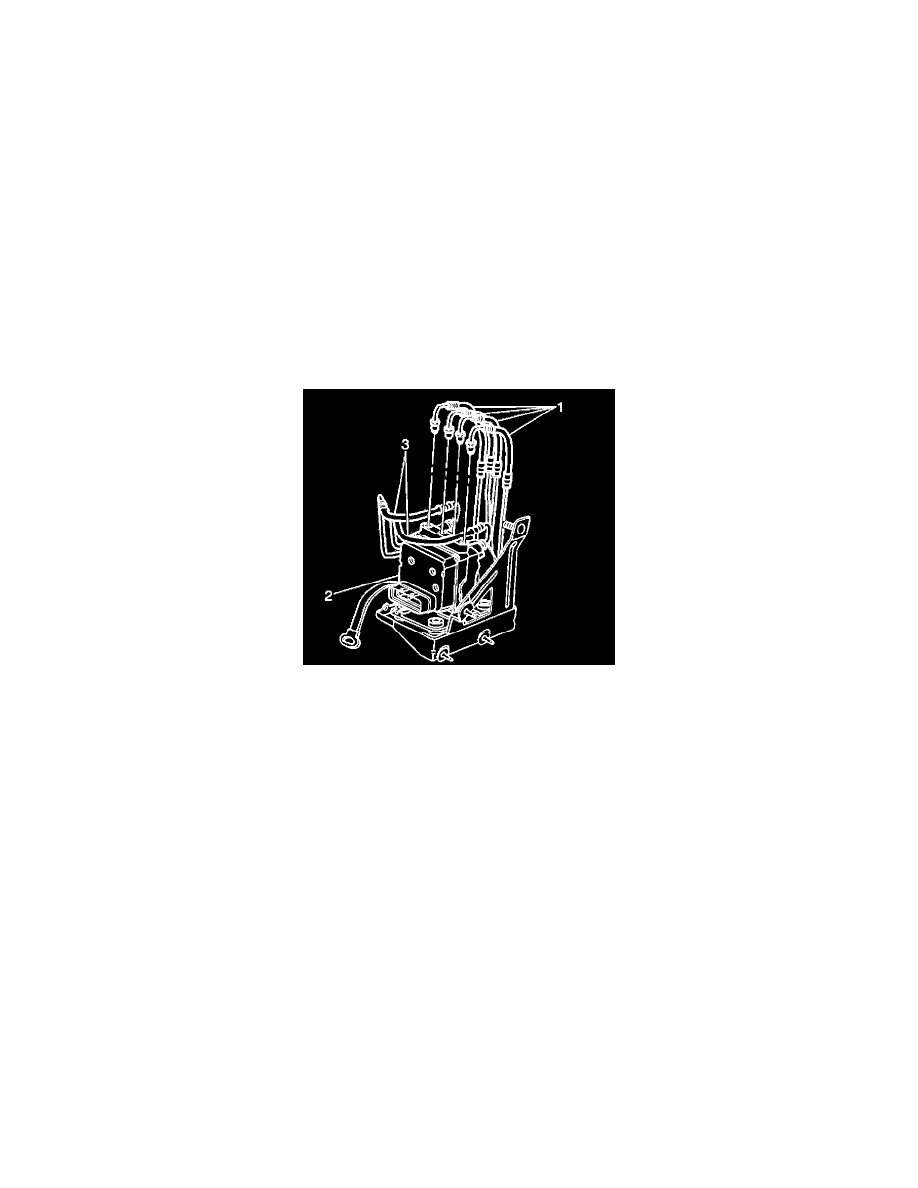Monte Carlo V6-3.4L VIN E (2000)

41. Ensure that the unacceptable brake pedal feel/travel is not caused by misadjusted brake linings or other mechanical failures, then repeat the Brake
System Pressure Bleeding procedure. Proceed to Step 1.
Caution: Do not move the vehicle until a firm brake pedal is obtained. Failure to obtain a firm pedal before moving vehicle may result in personal
injury.
42. Road test the vehicle. Make several normal (non-ABS) stops from a moderate speed in order to ensure proper brake system function. Allow
adequate brake system cooling time between stops.
Brake System Manual Bleeding Procedure
Notice: Avoid spilling brake fluid on any of the vehicle's painted surfaces, wiring, cables, or electric connectors. Brake fluid will damage the paint
and the electrical connections. It any fluid is spilled on the vehicle, flush the area to lessen the damage.
Important: This procedure may require the help of an assistant to apply the brake pedal while the bleeder valves are opened and closed.
Important: Ensure that the master cylinder brake fluid level does not drop to the bottom of the master cylinder reservoir. You will be instructed to
Inspect and fill the master cylinder reservoir at times during this procedure. However, the actual frequency of master cylinder reservoir filling
REQUIRED will depend on the amount of fluid that is released. If the brake fluid level drops to the bottom of the master cylinder reservoir, start the
bleed procedure again at Step 1.
1. Inspect and fill the master cylinder reservoir to the proper level as necessary. Refer to Master Cylinder Reservoir Filling.
Important: Use a shop cloth in order to catch escaping brake fluid.
2. Slowly open the ABS modulator brake pipe fitting (1) starting from the first pipe on the left side in order to allow the brake fluid to flow.
3. Press and hold the brake pedal approximately 75 percent of a full stroke.
Notice: Refer to Fastener Notice in Service Precautions.
4. Close the ABS modulator brake pipe fitting when air bubbles are no longer detected in the brake fluid.
^
Tighten the ABS modulator brake pipe fitting to 24 Nm (18 ft. lbs.).
5. Repeat Steps 2 and 3 for the remaining ABS modulator brake pipe fittings.
